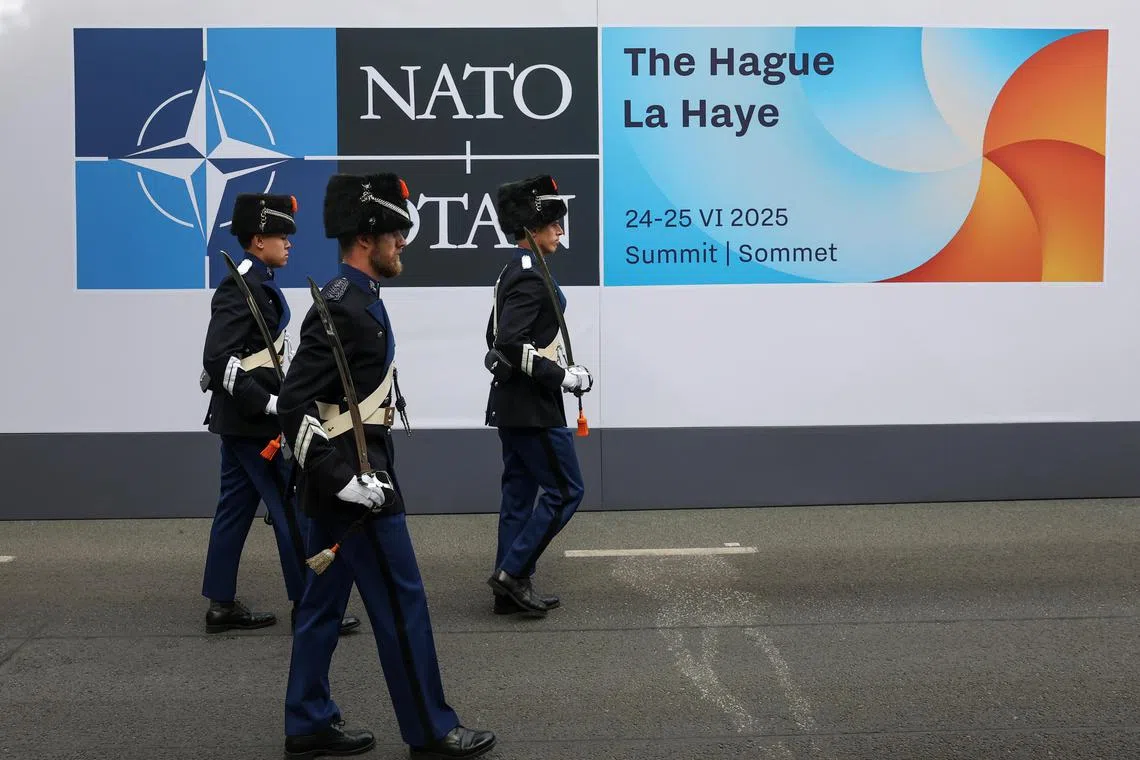Nato says all countries to finally hit 2 per cent defence spending goal
Sign up now: Get ST's newsletters delivered to your inbox

Nato members close to Russia such as Poland and the Baltic states are already set to reach five per cent of GDP in the next few years.
PHOTO: REUTERS
Follow topic:
BRUSSELS - Nato on Aug 27 said all its members were finally set in 2025 to hit the alliance’s previous defence spending target of two per cent of GDP – as they gear up for a far more ambitious goal.
The 32-nation military alliance agreed at a June summit in the Hague to massively hike defence spending over the next decade
The mercurial US leader rammed through a commitment from allies to cough up five per cent of their GDPs on security-related spending, in a move seen as key to keeping him engaged with Nato.
That headline figure breaks down as 3.5 per cent on core defence spending and 1.5 per cent on a looser range of areas such as infrastructure and cybersecurity.
The new target replaces the alliance’s former military spending goal of two per cent that was first set back in 2014.
Nato said in a statement that all allies were now expected to reach that goal in 2025 and that overall defence spending across the alliance would top US$1.5 trillion (S$1.93 trillion) for the year.
That comes after a group of stragglers – including Spain, Belgium and Italy – hastily announced plans to reach two per cent ahead of the Hague gathering.
The struggle to reach that figure highlights how difficult it will be for Nato countries in Europe to achieve Mr Trump’s far higher new target set in 2025.
But officials insist European countries must make good on their pledge if they are to have the capabilities needed to ward off Russia.
Numerous Western militaries and intelligence services have warned that Moscow could be ready to attack a Nato country within three to five years if the war in Ukraine ends.
Washington – which has underpinned European security since World War II – meanwhile insists it wants to shift more of the responsibility for the continent’s defences onto European countries.
The Pentagon is currently conducting a review of its worldwide deployments and has warned it could look to scale back its footstep in Europe to focus more on China.
While some European countries have lagged behind on defence spending, Nato members close to Russia such as Poland and the Baltic states are already set to reach five per cent of GDP in the next few years.
Poland was projected to be the highest spending Nato country in 2025 at 4.48 per cent.
The United States currently spends 3.22 per cent of its GDP on defence, but makes up the lion’s share of the alliance’s total expenditure in dollar terms. AFP

